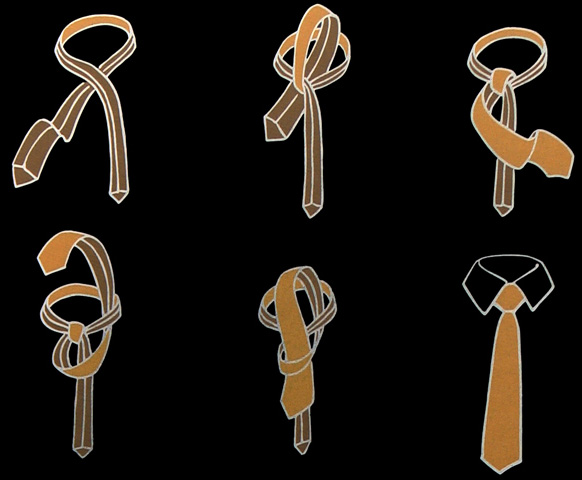Pratt knot is known by many names: Shelby, inverted half-windsor, an American or an American classic.
Deputy Windsor
Favorite in the USA node fits perfectly into the American way of life, it presents a very natural and easier than it binds the node of Windsor. If the tie has a thick lining, you can fill out a notch collar slightly asymmetrical knot Pratt, instead of so far used Windsor. Since the subsequent movements of the bonds are simpler to perform than the double the Windsor knot, that way you can tie the shorter ties and get a big knot.
Working hands
Depending on the material forming the tie knot after the last step of binding may cost you a little bit of nerves, Pratt knot belongs to those that have yet to be further “fine-tuned” to give them a nice shape. You should incur in the course of the node a little harder to grab and knead the material until the desired form.
The original Pratt knot is called. inverted node – start bonding seam on the outside and the system is up to the end, then hide the seam under the collar. In Europe, it is also known a variant of the node. You put a tie around the neck seam to the inside. With one hand you hold the narrow end, the second you turn the wide end so as to have the seam on the outside. Then you do the movements in the order given for the original Pratt. Try first just in case tie knot seam on the outside (reverse). If it bother you that the narrow end is also reversed, you need not bother with this option, but you can use a little trick: before you take out a node, turn the narrow end to the “right” side.
How to Tie a Pratt Knot (Shelby Knot)
In a few words:
- – (Almost) symmetrical
- – Large with wide and thick ties
- – A slightly wider collars
- – For informal occasions, but also to work
- – Advanced (required correction node)
- – Does not solve itself


